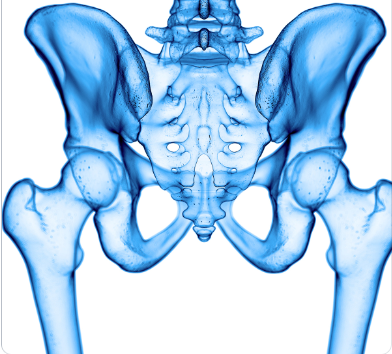
As we age, we wear down our bones, joints, muscles, and cartilage. Some people experience arthritis, bone spurs, or osteoarthritis. Others might begin getting more injuries like tears, sprains, or breaks. Osteoporosis and sarcopenia are two common conditions that weaken bones and muscles as people age. They are very prominent in the aging community, as they contribute to a lot of injuries and pain. Osteosarcopenia is the combination of the conditions.
These conditions make it harder to move around, increase the chances of falling and breaking bones, and create a large burden on healthcare. Orthopaedic doctors can help diagnose and treat these conditions, improving patients’ lives.
What is Osteosarcopenia?
Osteosarcopenia means having both osteoporosis (weak bones) and sarcopenia (loss of muscle). This term was only recently coined, but the issue has persisted for far longer. It becomes more common with age, affecting:
- 14.3% of men and 20.3% of women aged 60-64
- 59.4% of men and 48.3% of women aged 75+
Each is a unique condition with its own set of diagnosis and treatment methods. What’s the real difference between Sarcopenia and Osteoporosis?
Sarcopenia
Sarcopenia is the loss of muscle mass and strength, usually starting around age 60. Inactivity, low testosterone, genetics, and poor nutrition can contribute to the condition’s onset. Sarcopenia symptoms include:
- Falling more often
- Difficulty carrying out daily activities
- Experiencing a slower-than-normal walking pace
- Muscle weakness and loss
The symptoms can be subtle, and it is important that the aging population pays attention to their bodies. Sarcopenia can significantly lower your quality of life and can lead to serious health problems if not addressed. It also increases the need for hospital stays, as well as prolongs them. Financially, it’s better to address Sarcopenia before this happens!
Diagnosing Sarcopenia
Diagnosis looks at muscle strength, muscle size or quality, and physical performance. Usually, it is diagnosis includes simple tests, like measuring grip strength and using scans such as DXA, CT, or MRI. However, physical tests like walking speed and how quickly you can get up and go can also reveal symptoms of the condition. Any test that measures muscle mass and function can be a good indicator of sarcopenia.
Osteoporosis
Osteoporosis is a bone disease characterized by low bone density, or a porous bone. It makes the bones in our body brittle, weak, and susceptible to breaks and fractures. Factors that increase the risk of osteoporosis include:
- Sex
- Age
- Body Size
- Race
- Genetics
- Hormone Changes
- Diet
- Existing Medical Conditions
- Medications
- Low Activity Levels
- Heavy Alcohol Use
- Smoking
Diagnosing Osteoporosis
Osteoporosis is diagnosed through routine osteoporosis screenings, where BMD, or bone mineral density, tests are conducted. Women over 65 years old, men over the age of 70, and anyone who has high-risk factors are encouraged to get regular screenings. Cases of unexpected bone breaks almost always warrant a bone density test, as well.
However, physical symptoms that doctors might check for include:
- Loss of height and weight
- Changes in posture
- Balance and gait
- Muscle strength
Treating Osteosarcopenia
1. Lifestyle Changes
While osteosarcopenia cannot be fully reversed, it can be managed. Lifestyle changes are one of the effective treatments that you can take.
- Doctors always recommend getting proper nutrition, vitamins, and minerals. This might include taking calcium, vitamin D, and protein supplements.
- Regular exercise reduces fall risk and helps manage or prevent osteosarcopenia. Increasing your physical activity, especially strength training, is very effective at improving bone strength, muscle mass, and overall function. Balance and aerobic exercises help, but they need more research for strong recommendations.
- Cut out or reducing your alcohol intake.
- Quit smoking and avoid secondhand smoke.
- Visit the doctor for regular done density checks.
2. Medications
Right now, there are no specific drugs for sarcopenia. However, osteoporosis is treated with a variety of different medications. These include:
- Bisphosphonates, which help to slow bone loss.
- Hormone-replacement therapy, which can offset the effects of menopausal bone loss and other hormone-related risk factors.
- Denosumab, a bone loss prevention injection usually used when other medicinal options do not perform as expected.
- Bone-building drugs, which usually strengthen bones and cause bone-building cells to work harder.
Future Outlook
Osteosarcopenia is a growing concern for the elderly and aging community. The number of hip fractures are expected to double by 2050, making it crucial to address osteoporosis and sarcopenia. Doctors should encourage healthy lifestyles and strength exercise programs, but more research is necessary to find the best types, intensities, and frequencies of exercise.
If you or someone you love has suffered from and osteoporosis, sarcopenia, or osteosarcopenia injury in the Louisville, Kentucky-area, board certified sports medicine physician Dr. Stacie Grossfeld at Orthopaedic Specialists PLLC can help. Orthopaedic Specialists PLLC is accepting new patients, and same day appointments are available. For additional information or to schedule an appointment, please contact Orthopaedic Specialists PLLC today at 502-212-2663.

Recent Comments